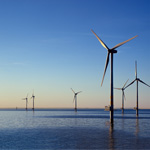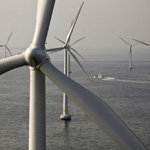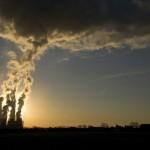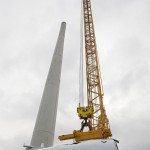 An overwhelming majority of the public in the UK approve of the government providing financial support for renewable energy technologies, according to a new survey. The YouGov poll for the Sunday Times found support from across the political spectrum, with Conservative, Labour, Lib Dem and UKIP voters all agreeing that the government should continue investing in low-carbon technologies.
An overwhelming majority of the public in the UK approve of the government providing financial support for renewable energy technologies, according to a new survey. The YouGov poll for the Sunday Times found support from across the political spectrum, with Conservative, Labour, Lib Dem and UKIP voters all agreeing that the government should continue investing in low-carbon technologies.
The survey found 65% of respondents in favour of government spending money for wind power, while 76% said the same for tidal energy and 78% backed financial support for solar. In comparison, only 49% approved of public financial support for nuclear, 57% for clean coal and just 40% said the government should provide support for shale gas. 47% of respondents considered shale gas projects as damaging to the environment.
Despite this, Chancellor George Osborne recently revealed tax breaks for the fracking industry, with a 30% tax rate for onshore shale gas production, much lower than oil taxes. Osborne called his new tax regime “the most generous for shale in the world”.
 The European wind industry has grown so rapidly over the past decade that it is facing a critical shortage of skilled personnel, a new report reveals. There is currently a shortage of 7,000 qualified personnel required by the European wind energy sector each year, a figure that could increase to 15,000 by 2030 if the number of graduates taking courses relevant to the industry does not rise.
The European wind industry has grown so rapidly over the past decade that it is facing a critical shortage of skilled personnel, a new report reveals. There is currently a shortage of 7,000 qualified personnel required by the European wind energy sector each year, a figure that could increase to 15,000 by 2030 if the number of graduates taking courses relevant to the industry does not rise.
The figures come from a new report by the European Wind Energy Technology Platform (TPWind), based on research by renewable energy consultancy GL Garrad Hassan: “Workers wanted: The EU wind energy sector skills gap”. A full 78% of companies that responded to the TPWind questionnaire said they “found it difficult or very difficult to find suitably trained staff”. This in an EU with an overall 11% unemployment rate, and a youth unemployment rate of 20.9% (5.5 million people between the ages of 15-24).
 The launch of ‘Deep Water: the next step for offshore wind energy’ saw an enthusiastic media focus on the idea that offshore wind could provide Europe with enough electricity to power Europe four times over. The headlines were impressive, but that offshore wind holds massive potential for Europe is not news for anyone following the wind industry.
The launch of ‘Deep Water: the next step for offshore wind energy’ saw an enthusiastic media focus on the idea that offshore wind could provide Europe with enough electricity to power Europe four times over. The headlines were impressive, but that offshore wind holds massive potential for Europe is not news for anyone following the wind industry.
As long ago as 2008, when far less than the current total of 6,040MW of offshore capacity was installed in Europe, the European Commission said that “offshore wind can and must make a substantial contribution to meeting the EU’s energy policy objectives through a very significant increase – in the order of 30-40 times by 2020 and 100 times by 2030 – in installed capacity compared to today.”
EWEA has projected that offshore will see 40 GW installed capacity by 2020, equivalent to 4% of EU electricity demand, and 150 GW by 2030, meeting 14% of EU electricity demand.
 After a meeting last week in Luxembourg, the board of the European Investment Bank (EIB) changed its energy lending policy. The EU’s main lending arm said it would stop financing most coal-fired power stations to help reduce pollution and meet climate targets, and devote 90% of its lending to clean energy.
After a meeting last week in Luxembourg, the board of the European Investment Bank (EIB) changed its energy lending policy. The EU’s main lending arm said it would stop financing most coal-fired power stations to help reduce pollution and meet climate targets, and devote 90% of its lending to clean energy.
In a press release, the EIB says it ‘will focus on financing energy efficiency, renewable energy, energy networks, as well as related research and innovation. These sectors are expected to require the most significant investment in coming years’.
According to the Guardian the EIB has loaned around €11bn ($14.5bn) to fossil fuel-fired plants since 2007, most of it to gas rather than coal, out of its total lending for power of €83bn.
 Greenhouse gases produced over the lifetime of a wind turbine – including for its manufacturing and installation – are less than that of fossil-fuel based energy sources and most other renewables, a new study from the US shows. Only ocean energy (wave and tidal) and hydropower have lower emissions than wind.
Greenhouse gases produced over the lifetime of a wind turbine – including for its manufacturing and installation – are less than that of fossil-fuel based energy sources and most other renewables, a new study from the US shows. Only ocean energy (wave and tidal) and hydropower have lower emissions than wind.
As a clean, fuel-free source of energy, wind turbines obviously create energy without generating the damaging pollutants that result from burning coal, gas and other fossil fuels. But a charge often leveled by anti-wind energy groups is that the manufacture and erection of wind turbines creates emissions on a scale that belies the idea that wind power is clean.
The Life Cycle Assessment (LCA) study by the National Renewable Energy Laboratory shows that wind energy‘s lifecycle greenhouse gas emissions are a small percentage of those of fossil fuels, lower than nuclear, and even lower than nearly all other renewable energy resources. From cradle to grave, coal-fired electricity releases about 20 times more greenhouse gases per kilowatt-hour than wind or solar, for example (based on median estimates for each technology). See the study for further details.
 An overwhelming majority of the public in the UK approve of the government providing financial support for renewable energy technologies, according to a new survey. The YouGov poll for the Sunday Times found support from across the political spectrum, with Conservative, Labour, Lib Dem and UKIP voters all agreeing that the government should continue investing in low-carbon technologies.
An overwhelming majority of the public in the UK approve of the government providing financial support for renewable energy technologies, according to a new survey. The YouGov poll for the Sunday Times found support from across the political spectrum, with Conservative, Labour, Lib Dem and UKIP voters all agreeing that the government should continue investing in low-carbon technologies.






 Comments
Comments



